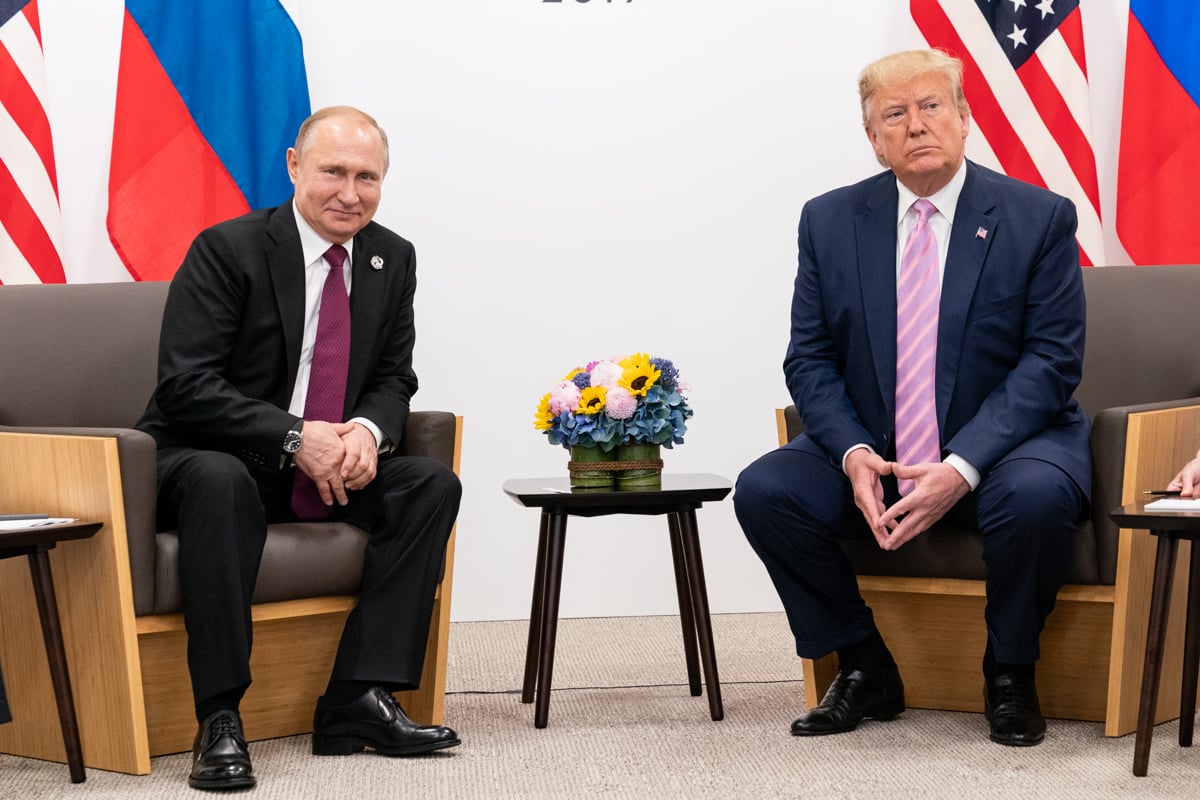
By Ksenia Kirillova, for Homeland Security Today
The theme of the need to confront Russian propaganda is relevant for most Western countries for at least the past few years. As Russian “information operations” spread around the world, more and more initiatives are being created to expose the lies and distortions emanating from the Kremlin: projects to expose fake news, analytical centers that review and monitor disinformation campaigns, and many private initiatives to observe Russian media. However, experts increasingly acknowledge that despite all these efforts, Kremlin propaganda remains a very effective tool of information warfare – much more effective than its Soviet predecessor.
Strength and weakness of “ideologies for export”
In many respects, this difference is explained by the fact that, unlike Communist propaganda, today’s Kremlin’s ‘information operations’ do not need to adhere to a specific ideology. Modern Russian propaganda, unlike Marxism-Leninism, does not have to maintain logical consistency, and is in fact often internally contradictory. To create and maintain momentum, it uses images and the feelings created by images which are so provocative that they affect people much more than rational arguments. Russian propaganda does not create a system of views, but it appeals directly to emotions, instincts, reflexes and passions, the intertwining of which leads to the desired result for the Kremlin.
This tactic is effectively used by Moscow both domestically and internationally. They consist of lies, slander, a mishmash of facts, creation of conspiracy theories and a multitude of contradictory versions of reality designed to destroy the notion of truth as such, as well as exploiting the slightest contradictions within Western societies to weaken and divide these societies. However, in order to work with certain groups of people abroad, the Kremlin creates special mini-ideologies – individual worldview systems aimed at specific social groups, most often adherents of radical views.
For example, ideology based on religious or “traditional” foundation primarily aims at the extreme right groups abroad. This ideology is characterized by aggressive imperialism, an emphasis on “traditional values,” coupled with a vehement rejection of Western values, often a pseudo-religious justification for the superiority of the “white race” or individual nations (sometimes with elements of blatant Nazism), an emphasis on the messianic nature of the activities of its supporters, creating an illusion of the “war of the civilizations,” “holy war,” fear of immigrants, etc. One of the most popular of its forms is the “Eurasianism” of Alexander Dugin. Major American publications have, more than once, described ties between local “white supremacists” and Russia, in particular Dugin’s followers. Equally strong is Moscow’s support for the extreme right in Europe, especially in the Balkans, where “authoritarian” passages about the revival of “Greater Serbia” appeal to hearts and minds of local nationalists.
A special case of the extreme-right ideology is a system of views developed specifically for the descendants of white emigrants abroad (primarily in the U.S.), who categorically reject the Soviet past. In addition to purely Russian attributes, such as a pronounced imperial ideology, the sanctification of the last Emperor Nicholas II, and the categorical rejection of any manifestation of national self-consciousness by the peoples inhabiting the former Russian Empire, it also contains some very bizarre justification of Russia’s current aggressive policy. For example, despite all the historical facts, these manifestations of national identity, as well as the pro-Western aspirations of the post-Soviet countries, are being presented as the product of Soviet communism, and not at all as a means of resisting it, as it was in reality.
The Soviet-communist ideology is, perhaps, the most organic of the worldviews listed above, and the one that conforms the most to the belief system within Russia itself. In general, it is based, for the most part, not on a certain worldview, but on the exploitation of the feelings of nostalgia for the idealized Soviet past. The rational component is introduced here only when the myths and images from the past are used to justify today’s growth of militarism and the aggressive policy of the Kremlin. This includes sponsoring “Immortal Regiments” and other versions of the romanticized Soviet version of history, exploiting the Cold War experience and, of course, proclaiming the goal of “restoring the USSR” as the basis of Russian foreign policy. Liberal values, unlike the previous ideology, are now declared as a “product” not of communism, but, on the contrary, the creation of its enemies – “damned imperialists.” The fact that economic policy within Russia itself, to put it mildly, is far from a “social state” in this case is tactfully hushed up.
Within Russia itself, “communist” and “monarchist” patriots often get along well with each other, but because a certain segment of diaspora and their descendants reject everything connected with the USSR, numerous government and state organizations that “work with compatriots” have to isolate these groups and work with each of them separately.
Russia doesn’t have a ready-made “ideology for export” to interact with the American extreme left; however, it seeks to take advantage of their anarchist views and rejection of any type of state institutions in order to create chaos and get the right “picture” for greater radicalization of the right spectrum. Unlike with the extreme right, Moscow does not directly interact with anarchist groups, preferring to influence them “under the false flag” using fake social media accounts.
The most famous attempt by the Kremlin to directly take control of this part of the leftist movement was the activity of the leader of the “Yes California” movement, which seeks secession of California from the U.S.: Louis Marinelli, who has close ties with Moscow. Unfortunately for him, Marinelli, who previously had a reputation as an ultra-conservative and had to immediately “reinvent” himself into the liberal for his new role, was eventually rejected by his fellow compatriots, after which this admirer of Russia had to move to Yekaterinburg, where he became a permanent resident.
It is easy to see that many of these ideologies are inherently contradictory, and almost all of them do contradict each other and the true realities of life in Russia. However, all of them are based on the same basic principle: they create a certain picture of the world that maximally impresses a particular social group, and which the members of this group really want to believe in. That is why exposing specific examples of disinformation is often ineffective, since this disinformation is so firmly embedded in the worldview of its consumers that people simply have no incentive to accept alternative information.
However, even the most harmonious and psychologically verified conspiracy theories have their own weaknesses, thanks to which these theories can be effectively refuted. Such a refutation, of course, is not able to change the worldview and values of a particular group, but it can complicate Russia’s ability to manipulate this group and to channel its potential into the direction the Kremlin needs. In order to most effectively debunk and refute the propaganda narrative, it is important to understand what principle Russian “ideologies for export” are built on.
The structure of creation of “ideologies for export”
Despite all the differences in the listed ideologies, it is important to note they have a single principle and an algorithm of construction, which equally effectively affects various social groups.
- The Kremlin propaganda machine has mastered the key principle of creating any illusory reality: ideology does not have to be logical and irrefutable. It has to be is pleasant, in line with people’s views and expectations, in tune with their passions and appealing to their vanity. In that case, it’s adopted voluntarily, in the conditions of absolute information freedom. Unlike the Soviet Union, whose propaganda only acted on people of pro-communist views, each of the ideologies listed above ideally suits their target group.
- Each of these ideologies presents an image of an enemy. Moreover, this “enemy” is in the category that the specific target group is already hostile to and which gives rise to their greatest phobias. For the American extreme left, the state is declared the source of all ills; for nationalists, the “Jewish conspiracy”; for religious fanatics, it’s the image of the “liberal Antichrist”; and so on. Accusing a selected group of causing real or illusory troubles, more often than not, has nothing to do with reality, but it appeals to the sense of identity of certain groups so much that they will adhere to this comfortable worldview until their last breath.
- The most important, concluding moment in the formation of an illusory reality is the connection that the Kremlin makes between the phenomena and processes that it dislikes and the above-mentioned enemies and phobias. Within Russia itself, we see that it is the minorities who don’t enjoy widespread support among the bulk of the population (Muslims, Crimean Tatars, oppositionists, etc.) who are accused of terrorism; Ukrainians of committing “sabotage” in the occupied Crimea; Americans, in particular the CIA, of paying people to take part in protest rallies, etc.
- We recall once again that not all of Russian propaganda and disinformation is presented in the form of harmonious theories. Frequently, it can be expressed in an illogical “information noise”, designed to completely confuse the consumer of information, “flood” him with many versions of reality and so many fakes that a person will get tired of checking and refuting them. In order to understand if we’re dealing with “ideology for export,” it’s important to determine whether it possesses the key features of such an ideology, namely:
– information is accompanied by a declaration of certain values and beliefs that clearly appeal to a specific target audience;
– it uses the language, images and concepts characteristic of specific social and worldview groups;
– in such information, the image of the enemy is presented in detail, often carrying references to the semantic and figurative series, which this group has long been firmly associated with;
– such information often contains a description of already done or future harm caused by the “enemy” (group’s phobias);
– the object of discredit is pronounced – the very modern phenomena, processes or personalities that the Kremlin is trying to denigrate, firmly linking them with the image of the enemy.
Methods of refuting disinformation contained in “ideologies for export”
As already mentioned, when choosing a tactic for refuting false information, it’s important to set realistic goals, and not try to completely refute the worldview of a particular group. The choice of values and beliefs by a particular person is a complex process that can be influenced by many personal irrational factors related to both psychological characteristics and experience. In addition, such things as concepts, views and even the image of the enemy, most often, were formed inside specific groups long before they came under the influence of Russian propaganda. The weak point of “ideologies for export” is primarily the logical chains and connecting links between the image of the enemy, the phobias generated by it, and the relatively new object of discredit for this group. These links most often represent conspiracy theories, the refutation of which is most effective when it does not affect the basic values of the group but reveals only false bindings of these values to erroneously selected objects.
To achieve this goal, we can offer an approximate mechanism (which, of course, may vary depending on specific cases):
- Determination of the target audience to which this or that disinformation is directed, and this audience’s main phobias.
- Identification and refutation of the main false associations that connect the image of the enemy, phobias and the object of discredit. So, during Robert Mueller‘s investigation of relations with Russia, the far-right propaganda in the U.S. tried to present it as an example of a “communist conspiracy” designed to “destroy America.” To this end, representatives of the conservative press sometimes used very bizarre logical chains. For instance, Nellie Ohr, an employee at Fusion GPS, the firm that hired Christopher Steelewho authored the infamous Trump-Russia dossier, studied at Harvard and worked at Stanford University during the years when supposedly those institutions were overtaken by “revisionism.” The majority of revisionists, according to the article, were “Marxists and Stalinists.” Ohr also dared to write research papers on the USSR. Moreover, despite the fact that in her dissertation about the Soviet Union Nellie Ohr directly states that “the Stalinist state tortured and executed completely innocent citizens,” the author still calls her a “Stalin apologist” and labels MI6 agent Steele a “Socialist,” actually equating this to a “communist.” Since radical conservatives automatically classify all their opponents as “Communists and Leftists,” what then emerges is a “leftist conspiracy by Stalinists against capitalist America,” we get here “the left-wing conspiracy of the Stalinists against capitalist America.”
In this case, we have all the classic signs of “ideology for export.” Communists are used here as an image of the enemy for the target group of conservatives, a “communist conspiracy” – as a phobia, and Mueller’s investigation – as an object of discredit. In this construction, one can find several substitutions of concepts.
First, the extreme left wing is quite small, even within the Democratic Party. Second, even this wing is very different in its views both from Stalinist communism and from left anarchism. Third, it’s wrong to reduce anti-Trump attitudes strictly to political differences. The behavior of the incumbent U.S. president sometimes is criticized by people of various views, including part of the Republican Party, and Mueller himself is a registered Republican. Moreover, precisely because of disagreement with the president’s policies, some of formerly loyal Republicans broke away from the party and created an alternative conservative movement. The leader of this “Stand Up Republic” movement is the former CIA officer Evan McMullin. Fourth, the article in principle doesn’t present any evidence of Christopher Steele’s “Stalinism.”
Therefore, the exposure of these substitutions will become a key in debunking conspiracy theories about the “Deep State.” At the same time, it is useless to try, relatively speaking, to change the conservatives’ attitude towards Communists or to try to refute the lie about the phrases or actions of individuals as long as these individuals are associated in their eyes with the main threat. Similar examples of the substitution of concepts can be given in cases with propaganda that uses fear of immigrants.
- In cases where Russian propaganda acts “under the false flag” and the target group does not have a positive attitude toward Russia, it’s important to provide evidence that a particular information product has Russian roots. This, for example, includes memes or whole conspiracy theories, originally created in Russian and then translated into English.
- If the group does not hide its direct relationship with Russia, as is often found among the extreme right-wing Americans, it’s possible to identify contradictions between particular ideology and other ones created by Moscow, as well as between this ideology and the realities of life in Russia itself.
For instance, about a year ago, far-right American organization League of the South, which is openly sympathetic to Russia, created a section in Russian on its website.
“We understand that the Russian people and Southerners are natural allies in blood, culture, and religion. As fellow whites of northern European extraction, we come from the same general gene pool. As inheritors of the European cultural tradition, we share similar values, customs, and ways of life,” League President Michael Hill wrote in an essay headlined “To Our Russian Friends.”
However, it’s very important to emphasize that the American radical right is infatuated with the image that Russia carefully tries to create in their eyes. They don’t know appear to know the real Russia. It’s important to emphasize the differences between the illusion and reality, which could help us in opposing Russian propaganda and Moscow’s influence on radical groups in the United States.
First, it is important to understand that Russia is not at all a “Christian state,” as it is trying to assure its foreign followers. The percentage of religious radicals in Russia is relatively small, and the ROC’s ideology is perceived by the majority like the Communist Party was perceived in the late Soviet era – as something that is necessary and “irreplaceable,” but not something that evokes fanatical faith.
Second, Russia’s political structure is also significantly different from the radical right’s ideal. American radicals consider even the democratic American government to be repressive and intrusive and they advocate greater freedom and the right to freely bear arms. But Russia is a repressive state, where the government doesn’t tolerate the slightest dissent and brings criminal charges even for posts on social networks and participation in solo protests, not to mention mass ones. It is unthinkable that people would be allowed to carry weapons openly in Russia. Handguns are mostly outlawed and hunting shotguns and rifles are strictly controlled, leaving less than 10 percent of the populace as legal gun owners. And Russian President Vladimir Putin has even suggested he might start a campaign using his national guard to confiscate guns from unlicensed Russian owners, a threat that reminded some of the old Soviet dissident roundups.
Third, American right-wing radicals advocate the extension of the powers of local self-government and the accountability of government institutions to people. But in Russia, any calls for separatism are punishable by imprisonment and the government considers demands to expand the powers of local government to be separatism. It is safe to say that an organization like the League of the South would not be able to exist in Russia even for a day. All of its participants could be arrested for terrorism and possibly spend at least 20 years in prison. Also, American radicals accuse the federal government of being corrupt. But modern Russia is one of the most corrupt states in the world with a rigid power vertical.
Fourth, as already noted, American right-wing radicals vehemently oppose communism, but modern Russia actively propagates the Soviet past, its symbolism and the cult of the KGB and Stalin.
After you have managed to debunk the basic conspiracy theories, the next step is to proceed to refutation of specific false facts and even, if successful, to shaking the basic beliefs of the radical group.
Nevertheless, it is important to emphasize that this strategy does not carry a solution to the problem of American extremism in general and it is not capable of changing the destructive views of people themselves. It is only capable of protecting problem groups from the foreign influence which is attempting to strengthen extremist tendencies and direct them into the most destructive channel. It is equally important to note that, while avoiding confrontation over the basic group’s beliefs in a case where it is meaningless, you should in no way encourage and “play along” with destructive beliefs. When deciding to leave those or other “problematic” views “outside the brackets” of your discussion, you should by no means presume them to be right and thereby help them take root in specific groups.
In this case, it is entirely possible that the doubts that you can generate in the “target group” regarding Russian propaganda will later become an impetus for these people to more systematically rethink their views.
The views expressed here are the writer’s and are not necessarily endorsed by Homeland Security Today, which welcomes a broad range of viewpoints in support of securing our homeland. To submit a piece for consideration, email [email protected]. Our editorial guidelines can be found here.
By Ksenia Kirillova, for Homeland Security Today




